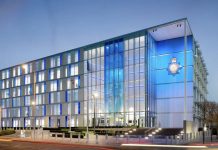Inflation fell to the Bank of England’s 2% target last month in an unexpectedly sharp slowdown that economists said was most likely a blip as the reopening of the economy after lockdown drives prices higher.
July’s slowdown in inflation reflected a jump in prices in the same month last year when Britain’s economy was emerging from its first coronavirus lockdown.
Prices of clothing and footwear and computers, games and toys also dragged on the rate of price growth last month, the Office for National Statistics said.
The price of second-hand cars were a big driver of inflation in July. Fewer one-year-old cars coming to the market now because of a fall in new car registrations last year, and the extensions of lease contracts and fewer part exchanges caused again by delays in new-car supply.
The price of petrol rose by 2.9 pence per litre between June and July this year, compared with a larger rise of 4.9 pence per litre a year ago when prices were recovering from a four-year low of 106.2 pence per litre in May 2020.
Similarly, diesel prices rose by 2.1 pence per litre this year, compared with a rise of 4.0 pence per litre a year ago. The movements reflect changes in oil prices as demand was affected last year by the coronavirus pandemic.
Global shipping problems, tight supplies of semiconductors and shortages of some goods such as motor vehicles have contributed to rising inflation .
The ONS data showed signs of continued inflation pressure in prices paid and charged by factories.







